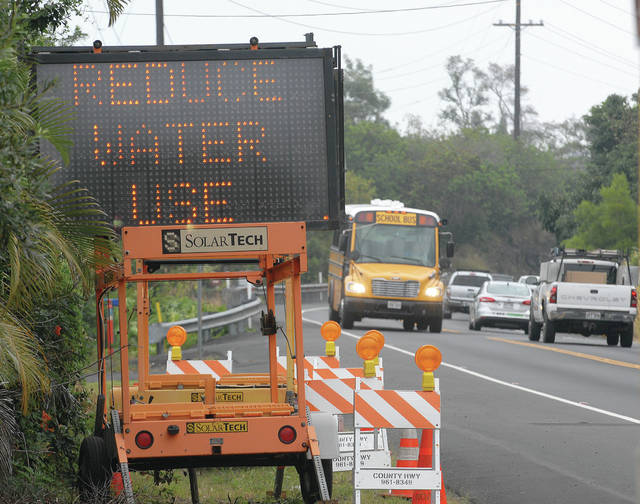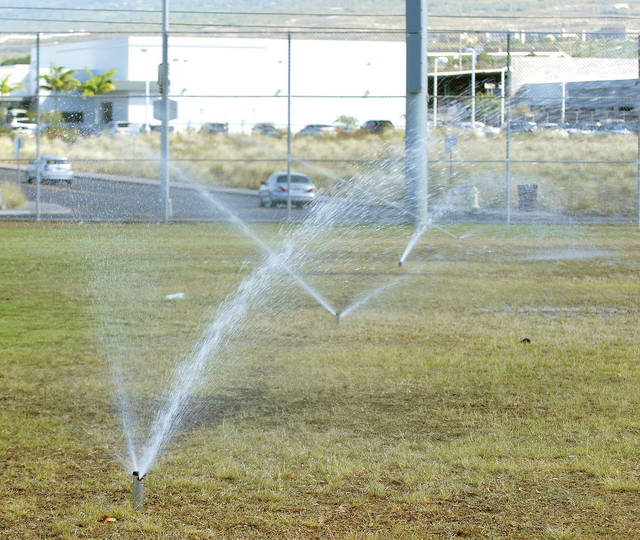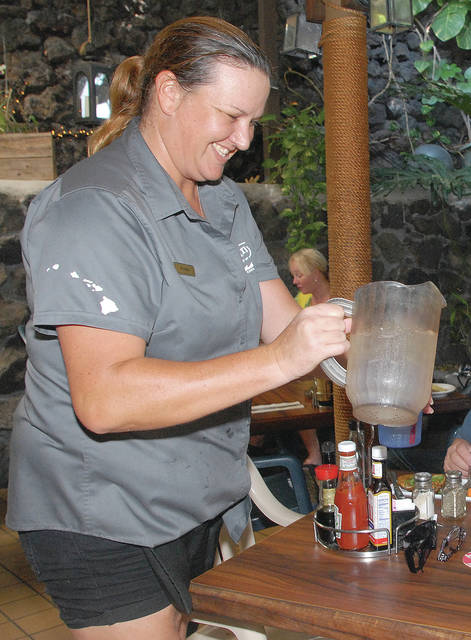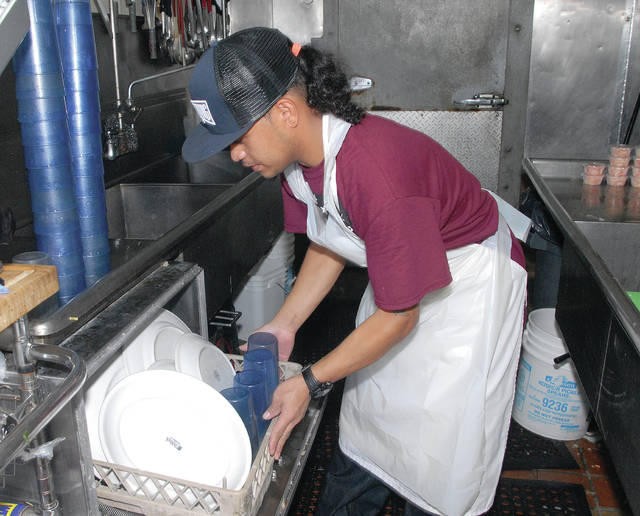KAILUA-KONA — A water restriction notice for North Kona issued in January by the Hawaii County Department of Water Supply is expected to remain in effect indefinitely, an official with the department said. ADVERTISING KAILUA-KONA — A water restriction notice
KAILUA-KONA — A water restriction notice for North Kona issued in January by the Hawaii County Department of Water Supply is expected to remain in effect indefinitely, an official with the department said.
The notice asking residents and business owners in North Kona to reduce water consumption by 25 percent was issued six weeks ago as the department began the process of repairing four inoperative wells in the area.
Robert Ravenscraft, water district supervisor in Kona, said at the time that four wells going offline simultaneously created a strain on the region’s anchor well at Honokohau, which has a capacity of 1 million gallons.
He initially told West Hawaii Today he expected the restrictions may only last a few weeks — a projection that looked promising after the Keahuolu well located on Queen Liliuokalani Trust land recently returned to functional status, dropping the number of offline wells from four to three.
Roughly two weeks ago, however, the Keopu well went down, complicating the issue.
“It was a zero sum game,” Ravenscraft said. “We lost one and we gained one, which is why the restriction is still on.”
For more than a month, large notice boards lining Queen Kaahumanu Highway and Mamalahoa Highway have helped notify the public of the restriction. Departmental management has also utilized radio and newspaper spots to spread word of the rollback.
Ravenscraft said the efforts appear to be working, as tank level monitoring indicates consumption has been fairly steady.
It’s typical for operating wells to dip during the weekends when more people are at home, particularly on hot and dry days, Ravenscraft explained. But it’s also typical for levels to rise up again during the week.
He said wells at both Honokohau and Keahuolu gained a foot on Tuesday, which points to residents attempting to do their part.
“We think there are a number of people who are taking it seriously,” Ravenscraft said.
Matt Keikkala, a homeowner in North Kona who was rinsing his truck Wednesday afternoon, said the news of a water shortage stuck him as disconcerting, adding he’s taken a few steps to do his part.
“This is the first time in about two months we’ve washed the car,” he said. “We actually do a pretty easy job of not using a lot of water in the house. Every little bit counts.”
Keikkala’s philosophy will be important in months to come as DWS is now asking North Kona residents to cut back on water usage indefinitely.
Along with Keopu, wells at Waiaha, Palani Ranch and Hualalai remain inoperative. Eric Takamoto, DWS mechanical engineer, said the contractor hired to repair the Waiaha well has materials on order and that the preliminary electrical work has been completed. The contractor will begin well extraction this week, and the well is expected to return to service by July 31.
Bids for repairs on wells at Keopu, Palani Ranch and Hualalai are currently out for solicitation and those wells are expected to return to service by mid-November, Takamoto said.
In the meantime, cool weather and the return of more consistent rainfall, if they come, should alleviate some of the pressure on wells in service as irrigation needs dwindle with more natural hydration of the landscape.
If another North Kona well were to fall out of service, Ravenscraft said the resulting steps would vary based on where the problem occurred and how departmental management, in concert with the mayor’s office, chose to proceed.
Still, he said people shouldn’t be too on edge about the possibility of losing a fifth well.
“If something really bad did happen, we still have some spare capacity at the Kahaluu and Keauhou areas,” Ravenscraft said. “We have some wells that could run longer if need be.”
The worst case scenario would be if the anchor well at Honokohau became inoperative, but Ravenscraft explained it has only been running a few months since its most recent repairs, adding DWS doesn’t anticipate any problems there.
To remain prepared for every scenario, however, management has also reached out to commercial consumers in North Kona, who tend to use the lion’s share of available water, asking them to scale back where possible.
“They do what they can, but they have to use water for some things they’re required to do,” Ravenscraft said. “Contractors have to do dust control. Restaurants have to clean and do dishes. We understand usage isn’t going to come to a complete stop.”
Kim Oi, a manager at Big Island Grill said there are some small measures her establishment has taken to chip in.
“I try not to give people water unless they ask for it,” she explained. “I don’t want to waste it.”
Other suggestions made by DWS to curb water usage include limiting lawn sprinkling, checking pipes and faucets for leaks and making sure to wash only full loads of laundry and dishes.






